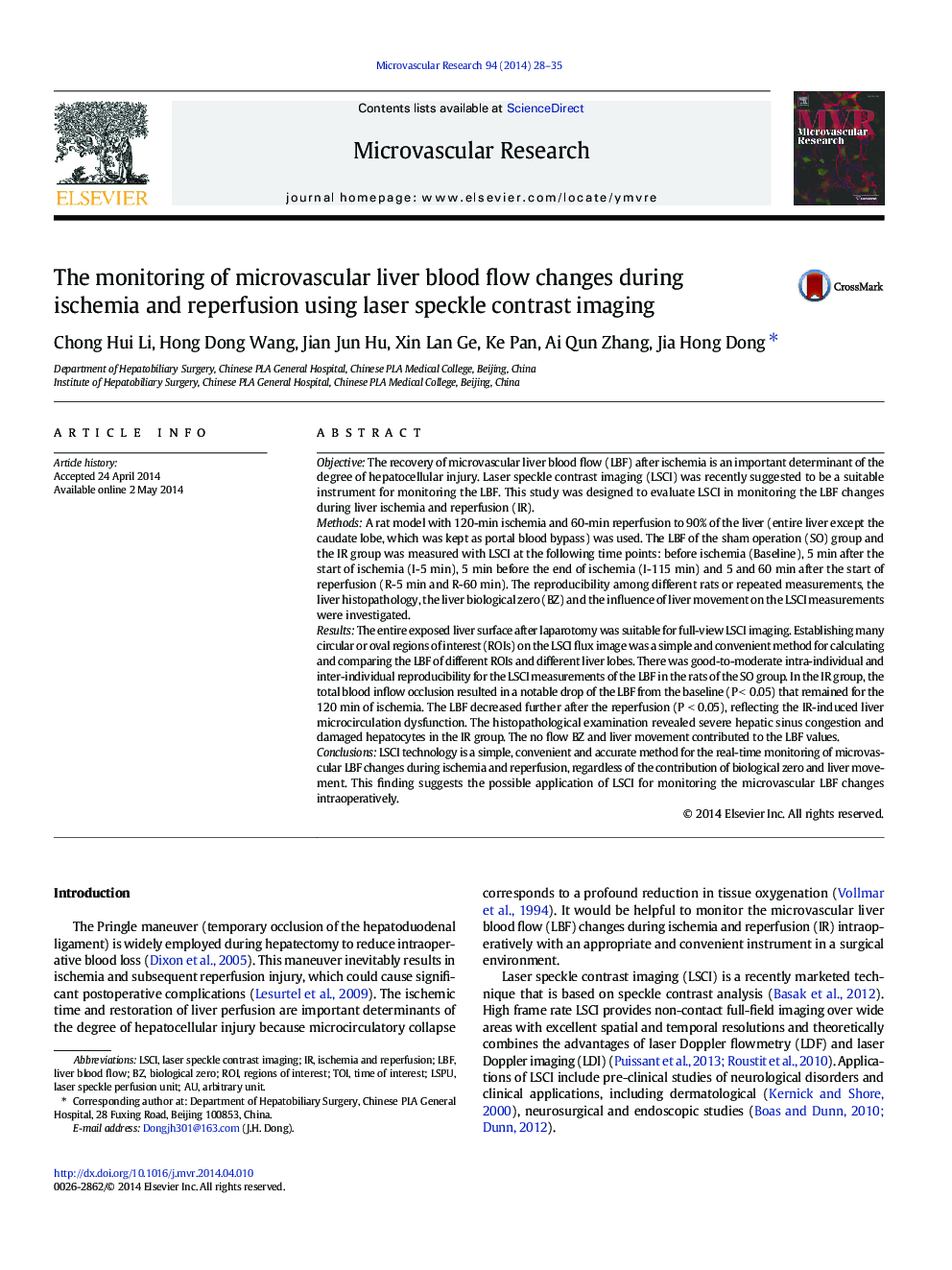| کد مقاله | کد نشریه | سال انتشار | مقاله انگلیسی | نسخه تمام متن |
|---|---|---|---|---|
| 1994771 | 1541290 | 2014 | 8 صفحه PDF | دانلود رایگان |
• The first use of LSCI technology in monitoring hepatic microcirculation dysfunction
• Proposed a simple method for LSCI monitoring and analyzing of liver microcirculation
• The first investigation of liver biological zero in LSCI measurement
• First investigation of liver movement on LSCI measurement of liver microcirculation
ObjectiveThe recovery of microvascular liver blood flow (LBF) after ischemia is an important determinant of the degree of hepatocellular injury. Laser speckle contrast imaging (LSCI) was recently suggested to be a suitable instrument for monitoring the LBF. This study was designed to evaluate LSCI in monitoring the LBF changes during liver ischemia and reperfusion (IR).MethodsA rat model with 120-min ischemia and 60-min reperfusion to 90% of the liver (entire liver except the caudate lobe, which was kept as portal blood bypass) was used. The LBF of the sham operation (SO) group and the IR group was measured with LSCI at the following time points: before ischemia (Baseline), 5 min after the start of ischemia (I-5 min), 5 min before the end of ischemia (I-115 min) and 5 and 60 min after the start of reperfusion (R-5 min and R-60 min). The reproducibility among different rats or repeated measurements, the liver histopathology, the liver biological zero (BZ) and the influence of liver movement on the LSCI measurements were investigated.ResultsThe entire exposed liver surface after laparotomy was suitable for full-view LSCI imaging. Establishing many circular or oval regions of interest (ROIs) on the LSCI flux image was a simple and convenient method for calculating and comparing the LBF of different ROIs and different liver lobes. There was good-to-moderate intra-individual and inter-individual reproducibility for the LSCI measurements of the LBF in the rats of the SO group. In the IR group, the total blood inflow occlusion resulted in a notable drop of the LBF from the baseline (P < 0.05) that remained for the 120 min of ischemia. The LBF decreased further after the reperfusion (P < 0.05), reflecting the IR-induced liver microcirculation dysfunction. The histopathological examination revealed severe hepatic sinus congestion and damaged hepatocytes in the IR group. The no flow BZ and liver movement contributed to the LBF values.ConclusionsLSCI technology is a simple, convenient and accurate method for the real-time monitoring of microvascular LBF changes during ischemia and reperfusion, regardless of the contribution of biological zero and liver movement. This finding suggests the possible application of LSCI for monitoring the microvascular LBF changes intraoperatively.
Journal: Microvascular Research - Volume 94, July 2014, Pages 28–35
